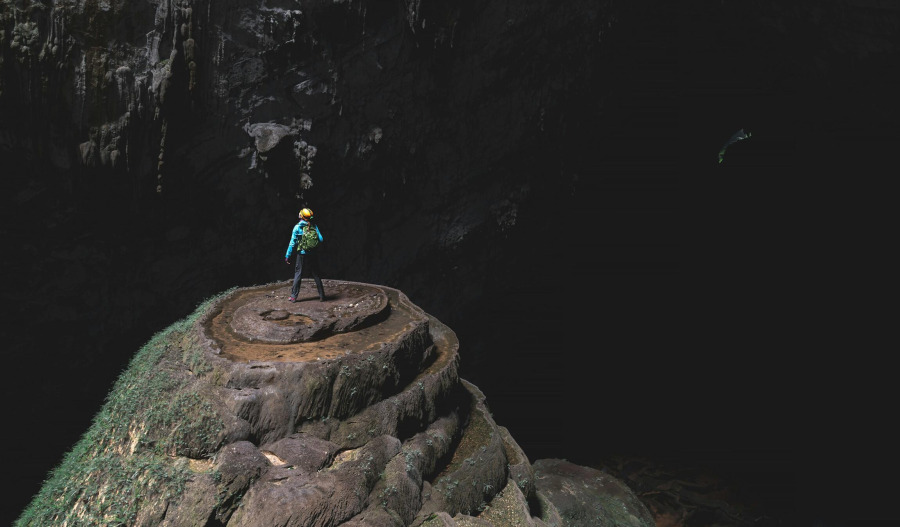Azzet reports on three ASX resource stocks with price moving updates today.
Eroad tanks after cutting earnings guidance ~
Shares in EROAD (ASX: ERD) were trading a whopping 34.6% lower by 2 pm AEDT (3 am GMT) after the Kiwi fleet tracking company flagged a major impairment and cut its earnings guidance.
The mid-cap stock reported an impairment of up to NZ$150 million (A$132.4 million) on intangible assets related to its North American operation, which is understood to reflect ongoing challenges in the region's telematics market.
Impairments aside, what also soured market sentiment today was the company’s lower guidance for 2025-26, now projecting NZ$197 million to $203 million in revenue, down from more than $205 million.
The company also lowered its annualised recurring revenue (ARR) to $175 million - $183 million from the previously expected $188 million, while the free cash flow margin was also cut to 5% from the previously expected 8% - 10%.
With the all-important North American market still not firing on all cylinders, the company told the market today it was planning to shift its focus to investments in Australia and NZ, while maintaining its presence in North America.
The refocus on the local market will see the company leverage its leadership in NZ’s eRUC system while also focussing on the emerging opportunities in electronic road user charging (eRUC) within Australia.
"North American resources will remain focused on delivering for our customers and partners, deepening relationships, and exploring further growth opportunities in cold-chain,” management noted today.
"With governments in both New Zealand and Australia moving toward usage-based and time-of-use charging, EROAD is uniquely positioned to lead.”
The company also announced it was changing its governance and management structure, with John Scott appointed to the role of executive chair, with immediate effect.
Meanwhile, Mark Heine is taking the lead as CEO, while David Kenneson, appointed 18 months ago to lead the North American market, steps down as co-CEO at the end of the month.
"I am incredibly excited by the opportunities ahead at EROAD, as we focus on what matters most to our customers and our growth," Heine said.
"As the world continues to trend towards more fuel-efficient vehicles, the need to fund global infrastructure sustainably and more equitably creates significant opportunity for EROAD."
To the uninitiated, Eroad operates in the telematics sector, focusing on electronic road user charging (eRUC) systems.
The company is a market leader in NZ and is known for its innovative solutions in road user charging and telematics, aiming to address the needs of large and complex vehicle fleets.
Early August, the stock’s share price jumped 28% to $1.84 on the news that the NZ Government plans to transition all local vehicles to electronic Road User Charging (eRUC).
At the time, Heine told the market that with NZ transitioning away from fuel excise taxes, eRUC presented a future-ready and proven solution that better reflects road usage.
Eroad has a market cap of $307 million; the share price is down 92% in the last year and down 33% in the last month.
The stock appears to be in a strong bullish trend, confirmed by multiple indicators.
Specifically, a 5-day moving average of the stock price is above the 50-day moving average.
Consensus is Strong Buy.
Iluka Resources tanks after pulling guidance for synthetic rutile
Shares in Iluka Resources (ASX: ILU) were down 7.5% after the rare earths group pulled its sales guidance for synthetic rutile due to uncertainties relating to the acquisition of Venator Materials UK Limited’s titanium dioxide (TiO2) manufacturing site by LB Group.
Today’s update follows LB Group’s disclosure on 16 October 2025 that it had signed an Asset Purchase Agreement with Venator.
Completion of the transaction is contingent upon regulatory approvals and customary closing conditions. LB’s statement to the Shenzhen Stock Exchange suggests that the Greatham site is currently idled and may remain so until the acquisition is finalised.
Iluka has a supply agreement with Venator and has already sold and received payment for 11,000 tonnes of synthetic rutile in 2025.
It’s understood that an additional 11,000 tonnes has been shipped to Venator, with Iluka retaining title until payment is received.
The company is contracted to supply a further 36,000 tonnes to Venator this year, as well as 63,000 tonnes and 35,000 tonnes in 2026 and 2027.
However, Iluka has not received notice from Venator regarding its obligations to purchase synthetic rutile due to the sale or idling of its Greatham facility.
Iluka is actively protecting its contractual rights and is exploring options to rebalance customer obligations over 2025 and 2026 with the security of supply of Iluka’s titanium feedstock products in 2026 and beyond.
Meanwhile, in a separate market update today – which the market has largely ignored - Iluka reported Q3 2025 zircon, rutile, and synthetic rutile production of 124kt, driven by strong synthetic rutile output, with commissioning at the Balranald project on track for Q4 2025.
Iluka also told the market it plans to cut net cash costs by $150 million in 2026 to manage market demand challenges and inventory levels.
In response to subdued market demand and elevated inventory, Iluka will suspend production at its SR2 synthetic rutile facility and Cataby mine from December.
But on the rare earths front, the company remains hopeful its Eneabba refinery in WA, to be commissioned in 2027, will - as one of the few facilities outside China - position the company as a future key supplier of both light and heavy separated rare earth oxides.
Iluka is also preparing for underground mining at Balranald - a rutile-rich deposit in the Riverina district of south-western New South Wales - with all equipment assembled and plant construction nearing completion.
Other key updates today included:
- Zircon/rutile/synthetic rutile (Z/R/SR) production of 124kt for Q3 2025, lifted by strong synthetic rutile output.
- Zircon sand sales of 44kt, with the average price in line at US$1,615/t.
- Mineral sands revenue of $142 million in Q3, with year-to-date (YTD) revenue at $699 million (down 16.6% on 2024).
- Net debt at 30 September 2025 of $256 million for mineral sands and $447 million non-recourse for rare earths.
- Production cash costs for Z/R/SR totalling $474 million YTD.
Iluka Resources has a market cap of $3.2 billion; the share price is up 19% in one year and up 23% in the last month.
The stock appears to be in a strong bullish trend, confirmed by multiple indicators. Specifically, a 5-day moving average of the stock price is above the 20 and 50-day moving averages.
Consensus is Hold.
Litchfield Minerals jumps after intersecting massive sulphides at Oonagalabi
Shares in Litchfield Minerals (ASX: LMS) were up 4.1% after the critical mineral explorer - focused on base metals and uranium in the Northern Territory - announced the intersection of disseminated semi-massive, and massive sulphides in drillhole OGRC011 at the Oonagalabi Project in the NT.
The intersection, located at the VT2 target, occurred sporadically between 180m and 291m, testing a VTEM conductor.
Commenting on today’s update, managing director Matthew Pustahya told the market that VT2 intersections mark a major milestone, supporting the potential for a large, mineralised system.
He also flagged the extension of the mineralised strike by approximately 1km, bringing the total strike length to over 4km.
The company plans to commence a Downhole Electromagnetic (DHEM) survey next week to model the conductor’s position and guide further drilling efforts at VT2.
It’s understood that the sulphide assemblage includes pyrrhotite, chalcopyrite, sphalerite, and pyrite.
These are hosted exclusively within mafic intrusive rocks, potentially representing a different style of mineralisation compared to the main Oonagalabi prospect.
The VT2 conductor is modelled as a large VTEM plate at approximately 150m depth with a strike length exceeding 500m. Similar mafic-hosted mineralisation has been observed at depth in other drill holes within the Oonagalabi and Bomb-Diggity cluster.
The company is now moving the drill rig to test VTEM target VT1, a strong conductor associated with gold-silver-copper-tellurium mineralisation in surface gossan, located 6km southwest of VT2.
Meanwhile, Litchfield has scaled back to one active drill rig while awaiting the availability of a second rig.
The company will reassess the mobilisation of an additional rig after reviewing DHEM results and geological logging from the current drilling phase.
The focus remains on completing priority holes across the Oonagalabi system, including the VT1 and VT2 conductor zones.
Litchfield Minerals has a market cap of $34 million; the share price is 541% in one year and up 450% in the last month.
The stock is in a strong bullish trend, confirmed by multiple indicators.
Consensus is Strong Buy.
This article does not constitute financial or product advice. You should consider independent advice before making financial decisions.



